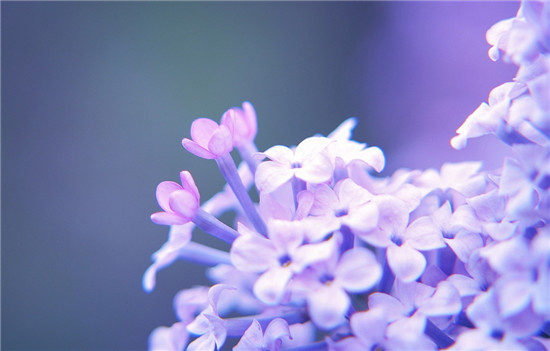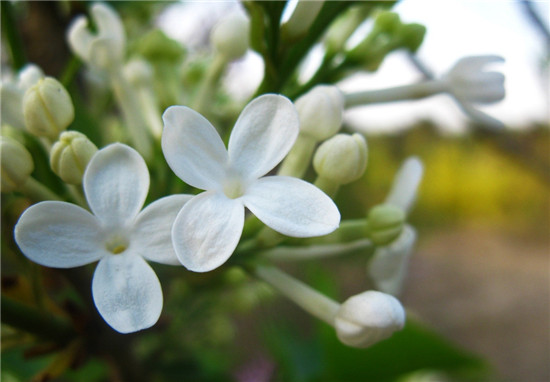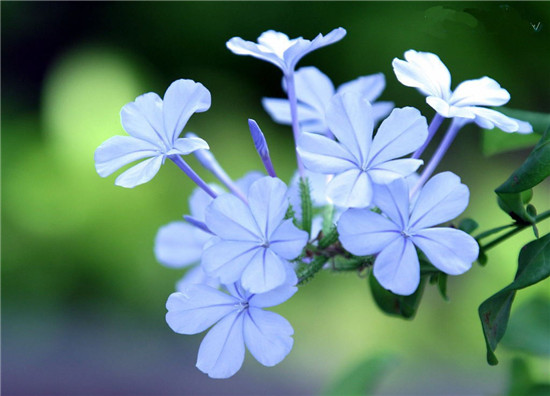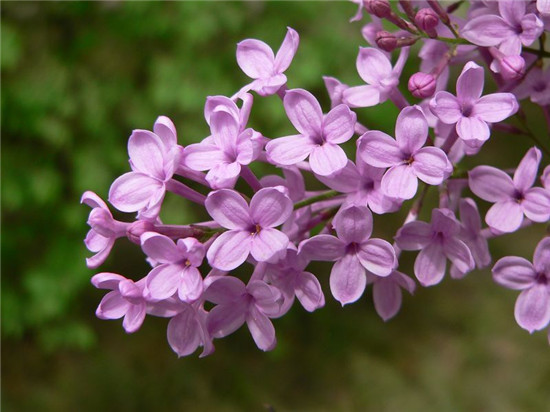How to maintain cloves
Lilac, also known as lilac, is a common ornamental flower, which is very suitable for planting in the courtyard. Next, let's take a look at the key points of lilac conservation.

Red cloves, shrubs, up to 4 m high. Branches erect, stout, grayish brown, lenticellate, branchlets grayish brown, glabrous or puberulent, lenticellate. Leaf blade ovate, elliptic-ovate, broadly elliptic to Obovate-long elliptic, 4-11 (- 15) cm long and 1.5-6 (- 11) cm wide, apex acute or shortly acuminate, base cuneate or broadly cuneate to suborbicular, dark green above, glabrous, pink-green below, Adnate sparsely pilose or pilose only along leaf veins, sparsely glabrous; petiole 0.8-2.5 cm long, glabrous or slightly pilose. Fruit oblong, 1-1.5 cm long, ca. 6 mm wide, apex convex, lenticels obscure. The florescence is from May to June and the fruiting period is September.
The red lilac is distributed in the coastal waters of southeastern North America, its shape is similar to that of cranberries, the aquatic leaves are small lanceolate and cross opposite, and they look like green aquatic plants from a distance, except for the redness at the bottom of the leaves and stems. The leaves in the water are narrow lanceolate, 3 cm long and 0.4 cm wide, and most of them are sold on the market. If they are moved to the water for cultivation, they will gradually become the leaves in the water. In the process of hydration, the water quality conditions must be paid attention to (pH6.O-7.2, temperature 18-26 degrees), otherwise it is easy to wither. In fact, it is not difficult to plant red cloves, but to grow a beautiful scarlet is a technical test, because if the conditions are not very good, its color is yellowish green or light orange, which cannot highlight the characteristics of red aquatic plants. Therefore, attention must be paid to light quality and fertilizer!

Maintenance methods of clove flowers
The lilac is beautiful, the flowers are purple and fragrant. Using lobular privet root pile as rootstock to graft cloves into bonsai, with ancient dried flower branches, complement each other, the most ornamental. Cloves are positive trees that like to grow in sunny places, grow weakly in shade or semi-shade, and bloom sparsely. It is not strict with the soil, and can withstand barren. Except for strongly acidic soil, it can grow normally in all kinds of soil, and the loose neutral soil is the best.
Place: cloves like light, usually should be placed in a place with plenty of sunshine and air circulation. However, it is necessary to give a little shade in summer, and high-temperature sunburn is disadvantageous to the growth of potted cloves. In winter, the pot is buried in the outdoor sunny place or in front of the indoor windowsill.
Watering: usually keep the basin soil moist and dry, do not be too wet. High temperature in summer should be watered once in the morning and evening, and less watering should be done after autumn to facilitate dormancy and overwinter.

Fertilization: use rotten cake fertilizer as base fertilizer in winter, and apply cake fertilizer and water every half a month after germination in spring to promote flowering. Summer should also be properly fertilized to facilitate flower bud differentiation and maintain more flowers in the following year. Less fertilizer and water after autumn, too much fertilizer, which is harmful to development.
Pruning: cloves in the growing period, branches and leaves are too dense, should be pruned in time, not only does not interfere with the tree, but also conducive to ventilation and light. When you enter the dormant period after autumn, it is necessary to properly trim and trim the overgrown branches, overlapping branches and cross branches, so that the nutrients are concentrated and the buds are pregnant.
Turn the basin: turn the basin every 2-3 years, combine turning the basin, trim the root system, remove part of the old root and over-long root system, remove the old 1B2 soil, and replace it with newly cultivated soil to facilitate root development, leaf growth and flower propagation.
Pest control: cloves in the case of too wet, easy to produce root rot, light stop growing, heavy withered to death. Clove common pests are domestic antler longicorn beetles, damage to branches, as well as coir moth, diamondback moth, aphids and so on. It can be killed with 40% dimethoate 1500 times liquid spray.

The efficacy and function of red clove
1. The ornamental value of red cloves
The inflorescences of red cloves are arranged neatly and look in good order. And its design and color is more elegant, the overall posture and shape is also very beautiful, so it has a strong ornamental value. Of course, we also know that the vitality and adaptability of red cloves are also very strong, cold-resistant and cold-resistant, so they can be planted artificially and only need very little manpower and material resources to harvest beautiful red cloves.
2. The garden value of red cloves.
When it comes to the ornamental value of red cloves, we have to mention the garden value of red cloves. Red cloves are generally planted on the lawn or by the side of the road and are used as sets. Of course, transplanting can also be carried out. The survival rate of red cloves is very high, and there is almost no need to worry that it will die because of transplanting, so we often plant red cloves for the value of the garden.
3. Other values of red cloves
Red cloves are more prominent in their own patterns and colors, so in addition to ordinary pot culture, they are also a very good material for cut flowers, which can be used as the preferred material for cutting flowers, and become a very interesting ornamental work of art. in the hearts of many people who love cut flowers, red cloves must also be a relatively unique one!
The above is the whole content of how to maintain red cloves and the main points of red cloves maintenance. I hope this article can help you. Please continue to follow us.
There is almost no need to worry that it will die from transplanting, so we often plant red cloves for the value of the garden.
3. Other values of red cloves
Red cloves are more prominent in their own patterns and colors, so in addition to ordinary pot culture, they are also a very good material for cut flowers, which can be used as the preferred material for cutting flowers, and become a very interesting ornamental work of art. in the hearts of many people who love cut flowers, red cloves must also be a relatively unique one!
The above is the whole content of how to maintain red cloves and the main points of red cloves maintenance. I hope this article can help you. Please continue to follow us.
Related
- Wuhan Hospital Iron Tree Blooming Result Was Instantly Frightened by the Gardener Master
- Which variety of camellia is the most fragrant and best? Which one do you like best?
- What is the small blue coat, the breeding methods and matters needing attention of the succulent plant
- Dormancy time and maintenance management of succulent plants during dormancy
- Minas succulent how to raise, Minas succulent plant pictures
- What are the varieties of winter succulent plants
- How to raise succulent plants in twelve rolls? let's take a look at some experience of breeding twelve rolls.
- Attention should be paid to water control for succulent plants during dormant period (winter and summer)
- Watering experience of twelve rolls of succulent plants
- Techniques for fertilizing succulent plants. An article will let you know how to fertilize succulent plants.



